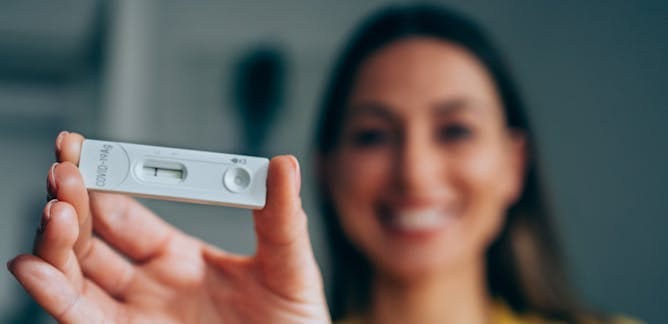"Since no quantified virus isolates of the 2019-nCoV were available for CDC use at the time the test was developed and this study conducted, assays designed for detection of the 2019-nCoV RNA were tested with characterized stocks of in vitro transcribed full length RNA (N gene; GenBank accession: MN908947.2) of known titer (RNA copies/µL) spiked into a diluent consisting of a suspension of human A549 cells and viral transport medium (VTM) to mimic clinical specimen."
https://www.fda.gov/media/134922/download
At the time the CDC was developing their PCR test for detecting the 2019 novel coronavirus (2019-nCoV), they did not have actual samples of the virus available.
Instead of using real virus samples, they used synthetic RNA, which was artificially created to match the genetic sequence of the virus's N gene.
This RNA sequence corresponds to the GenBank accession number MN908947.2.
(Drosten)
MN908947.1 was conveniently posted by Professor Yong-Zhen Zhang, Shanghai Public Health Clinical Center & School of Public Health, Fudan University, Shanghai, China on 05-JAN-2020 and replaced on Jan 17, 2020 with MN908947.2.
https://www.ncbi.nlm.nih.gov/pmc/articles/PMC6988269/
A strange typo happened here
"In the article ‘Detection of 2019 novel coronavirus (2019-nCoV) by real-time RT-PCR’ by Corman et al. published on 23 January 2020, the sentence ‘As at 20 January 2020, 282 laboratory-confirmed human cases have been notified to WHO’ was originally published with a wrong date (As at 20 January 2019…). This mistake was corrected on 8 April 2020."
Probably very specific
"In total, this testing yielded no false positive outcomes. In four individual test reactions (out of 198), weak initial reactivity was seen but they were negative upon retesting with the same assay."
https://www.ncbi.nlm.nih.gov/nuccore/MN908947
The N gene, as part of the nucleocapsid protein of SARS-CoV-2, is typically found within the viral particle. However, there are scenarios where fragments or sequences of the N gene could be detected in the body without the presence of the entire virus.
Like:
Residual Viral RNA: After an infection, fragments of viral RNA, including the N gene, can remain in the body even after the active virus has been cleared. This residual RNA can be detected by sensitive diagnostic tests like RT-PCR, leading to positive results despite the absence of live, infectious virus.
Shedding of Viral RNA: Infected cells can shed viral RNA, including the N gene, into bodily fluids such as saliva, mucus, or stool. This shedding can continue for some time after the infection has been resolved, meaning viral RNA can be present without the whole virus.
Cellular Debris: Cells that were infected and have since died can release fragments of the virus, including RNA sequences. These fragments can be detected by diagnostic tests.
Lab Contamination: In a clinical or laboratory setting, contamination with viral RNA from positive samples can result in the detection of the N gene in samples that do not contain the whole virus.
Vaccination: Although less common with current COVID-19 vaccines, if future vaccines use viral vectors or inactivated virus, RNA sequences from the N gene might be detected in the body after vaccination.
Gene Fragments in Biological Samples: In research or clinical environments, handling of viral RNA or gene sequences can sometimes lead to the presence of these sequences in samples or the environment, which might be detected by sensitive assays.
It's important to note that detecting the N gene or its RNA alone does not necessarily indicate the presence of infectious virus.
Not that the N-Gene was stable.
https://www.ncbi.nlm.nih.gov/pmc/articles/PMC8661661/
Then on the incorrect use of the PCR-Test:
https://childrenshealthdefense.org/defender/pcr-testing-incorrect-use/
Curative offers a PCR test using spit rather than swabs from the back of your nasal cavity. Initially only authorized for use on symptomatic patients, the company has requested the U.S. Food and Drug Administration expand its authorization for use on asymptomatic individuals.
According to company data, the spit test accurately identifies about 90% of positive cases when compared against a nasopharyngeal PCR test set to 35 cycle threshold (CT).
According to the FDA, that comparative CT is too low, and will produce too many false negatives. This, despite the scientific consensus, which states anything over 35 CTs is scientifically unjustifiable as it produces enormous amounts of false positives.
According to an April 2020 study, a CT of 17 must be used to obtain 100% confirmed real positives. Above 17 cycles, accuracy drops dramatically. At 33 cycles, the false positive rate is 80%. Beyond 34 cycles, the false positive rate reaches 100%.
Because the PCR test cannot discern between live virus and dead, noninfectious viral debris, the timing of the test is important. Recent research shows the median time from symptom onset to viral clearance confirmed by viral culture is seven days, whereas the PCR test continues to detect nonviable (noninfectious) SARS-CoV-2 for a median of 34 days.
*****
PCR testing was forced upon healthy people, not patients only.
The used amount of cycles far exceeded the normal 17. The tests were run at 25-45 cycles and accidentally, let's remember the positive tested avocado or Coca Cola.
The amount of false positives fueled the pandemic narrative and allowed for media fear mongering and pushing the modRNA jab.

